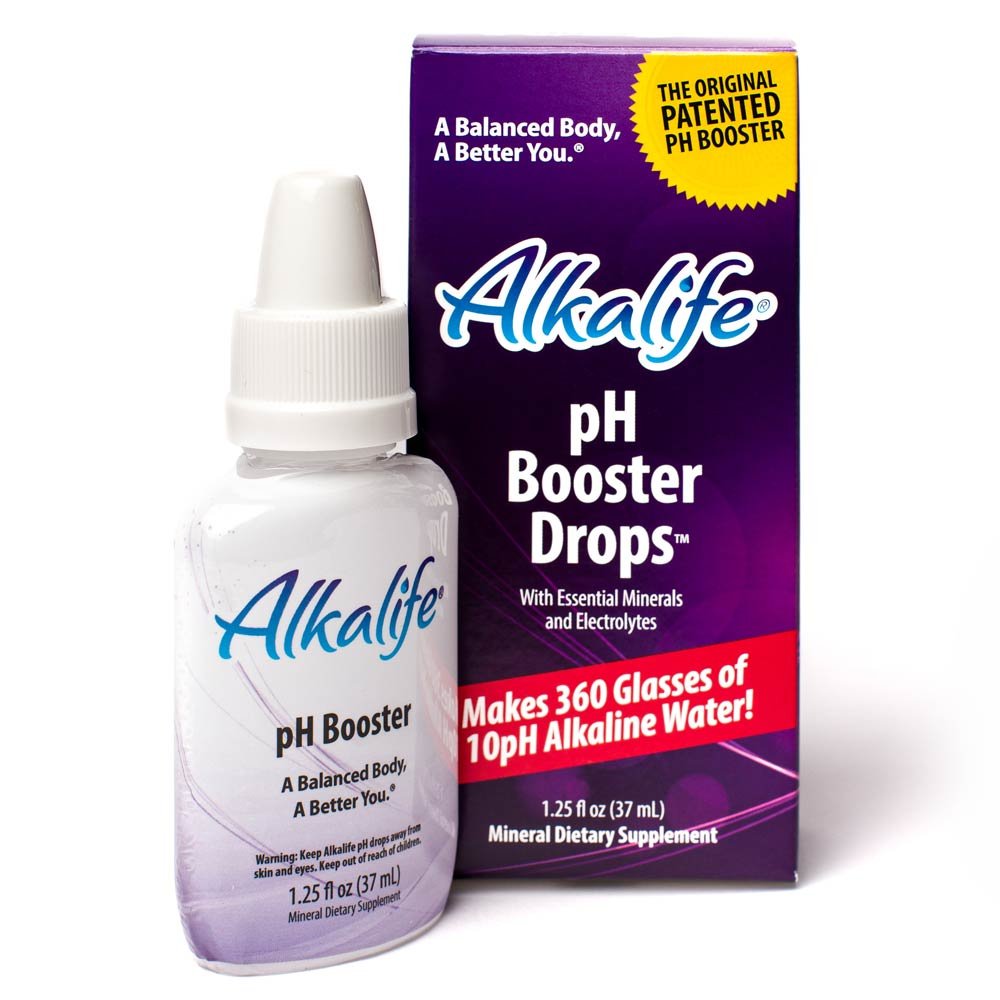Free US Shipping $49+ | 60 Day Money Back Guarantee
Free US Shipping $49+ | 60 Day Money Back Guarantee
20 Signs Your Body Is Too Acidic and How Alkaline Water Helps
July 16, 2025 4 min read

Why pH Balance Matters
Most people believe acid reflux is the main alarm for excess body acidity, yet persistent bad breath and brittle nails are revealing low body pH symptoms. pH measures hydrogen ion concentration on a 0–14 scale: 7 is neutral, below 7 is acidic, above is alkaline. Healthy blood pH stays between 7.35 and 7.45. Straying below this range triggers chronic acidity, fueling inflammation, digestive distress and weakened immunity. Over time, an acidic internal environment can accelerate aging, impair nutrient absorption and increase disease risk—underscoring the need to monitor and restore your 7 pH balance.
20 Warning Signs of Excess Body Acidity

-
Chronic Fatigue: Persistent tiredness and low energy are classic low body pH symptoms. Excess acid hampers mitochondrial function, reducing ATP production. Even after rest, you feel drained and lethargic.
-
Frequent Headaches: Acidic waste buildup can constrict blood vessels, reducing oxygen flow to the brain and triggering tension headaches. These recurring headaches often signal an imbalance in your body’s pH.
-
Muscle Cramps & Aches: When the body is too acidic, mineral absorption suffers—particularly calcium and magnesium—leading to painful cramps and muscle soreness. You may wake up feeling stiff and achy.
-
Joint Pain & Stiffness: Chronic acidity inflames joints and depletes cartilage. The acidic environment erodes lubrication, making movement painful and stiff. Without pH balance, arthritis-like symptoms can intensify over time.
-
Indigestion & Heartburn: Excess stomach acidity disrupts digestion, causing bloating, gas and burning sensations. Persistent heartburn is a well-known sign of acid reflux and flags overall systemic acidity needing attention.
-
Frequent UTIs: An overly acidic urinary tract can irritate bladder walls and alter flora. This imbalance invites bacterial growth and recurrent, chronic infections, indicating potential pH disturbance.
-
Bad Breath: Halitosis often stems from high oral acidity feeding odorous bacteria. When saliva pH drops, microbial imbalance multiplies foul-smelling compounds. Bad breath can reflect deeper systemic acid overload.
-
Brittle Nails: Nails become dry, cracked or ridged when pH imbalance impairs keratin synthesis. Acidic stress depletes calcium and other minerals, undermining nail strength and growth over time.
-
Skin Breakouts: Excess acidity can trigger inflammation and clog pores, resulting in acne and rashes. The body may expel toxins through the skin when internal pH veers too low.
-
Slow Wound Healing: An acidic internal environment impairs collagen synthesis and reduces blood cell efficiency. Wounds take extra time to heal and carry higher infection risk, signaling low pH.
-
Brain Fog: Acid overload can disrupt neurotransmitter balance and blood flow to the brain, leading to poor concentration, memory lapses and fatigue. This “foggy” feeling often reflects underlying pH imbalance.
-
Sugar Cravings: Acidic stress destabilizes blood sugar levels, driving cravings for sweets. Your body seeks energy to counter pH imbalance, creating a vicious cycle of sugar spikes and rebounds.
-
Mood Swings: High acid levels can influence hormone production and neurotransmitter activity, triggering irritability, anxiety or mood shifts. Balancing pH supports stable emotions and helps prevent erratic mental states.
-
Frequent Illnesses: An overly acidic environment weakens immune function by impairing white blood cell activity. You may catch colds or infections more often, indicating your pH is low.
-
Water Retention: Acidic imbalance can disrupt electrolyte levels and kidney function, causing bloating and fluid buildup. Holding onto water may signal your body is trying to dilute excess acidity.
-
Digestive Issues: Beyond heartburn, chronic acidity disrupts gut flora and enzyme function, leading to diarrhea, constipation or bloating. These symptoms often mirror an underlying struggle to maintain healthy pH balance.
-
Excessive Sweating: Acidic buildup can overstimulate sweat glands, causing you to sweat more heavily. Persistent sweating might indicate your body is expelling excess acid to try to rebalance pH.
-
Muscle Weakness: When pH dips, electrolyte imbalances impair muscle contractions. You might feel weak during routine activities or exercise, a hallmark of inadequate mineral uptake due to excess acidity.
-
Gum Problems: Acidic saliva can erode tooth enamel and irritate gums, leading to bleeding, swelling or sensitivity. Low oral pH creates an environment conducive to periodontal disease and cavities.
-
Insomnia: Acidic stress elevates cortisol and disrupts melatonin production, making it hard to fall or stay asleep. Poor sleep quality often signals your internal pH is too acidic.
How Alkaline Water Helps Neutralize Excess Acid

Alkaline water, with a pH typically between 8 and 9, acts as a natural buffer to counter excess acid in your system. When consumed regularly, it helps optimize pH balance by neutralizing acidic compounds. Beyond dilution, alkaline water offers superior hydration—its smaller molecular clusters penetrate cells more efficiently—and delivers antioxidant hydroxide ions that combat free radicals.
Studies link alkaline hydration to improved bone density and reduced muscle fatigue. By supplying essential minerals—calcium, magnesium and potassium—it aids electrolyte balance and supports cellular function.
This higher pH also helps neutralize lactic acid buildup post-workout and reduces acid reflux episodes.
Alkaline water benefits:
-
Enhanced mineral delivery for bones and muscles
-
Antioxidant action to fight free radicals
-
Optimized digestion and toxin elimination
Here’s how common beverages stack up on the pH scale:
-
Soda: pH ~3.0 (highly acidic)
-
Coffee: pH ~5.0 (moderately acidic)
-
Regular Water: pH ~7.0 (neutral)
-
Alkaline Water: pH ~8.5–9.5 (alkaline)
Everyday Habits to Maintain an Alkaline pH

Focus your plate on alkaline-rich foods—leafy greens, citrus fruits, nuts and legumes—to counter acidic vs. alkaline foods imbalance. Aim for a 70/30 ratio of alkaline to acidic items.
-
Prioritize spinach, kale and broccoli as staple greens
-
Snack on almonds, chia seeds and fresh berries
Hydration is key: drink at least 2–3 liters of water daily, including alkalized water or adding pH drops/tablets. This restores pH balance naturally and enhances cellular hydration.
Manage stress with meditation or yoga, and engage in regular exercise. Get 7–8 hours of sleep nightly to reduce cortisol-induced acidity and support long-term pH balance.
Simple pH Testing at Home

Your saliva and urine can reveal your pH balance. Use reliable pH test strips, dip them in samples, compare colors to the chart. Track readings twice daily—morning saliva and evening urine—to identify trends. Log results to see if supplementing with alkaline water or diet adjustments restore equilibrium.
Your Next Steps to Reclaim pH Harmony
You’ve uncovered the top low pH symptoms revealed by 20 signs of acidity—from fatigue and joint pain to skin breakouts. Combine awareness with at-home pH testing and regular alkaline water to naturally neutralize excess acid. Consistent, small changes build a foundation for sustained well-being and balanced pH.
Also in News

Electrolytes vs. Water : What Your Body Needs After a Tough Workout
July 15, 2025 4 min read
Read More







